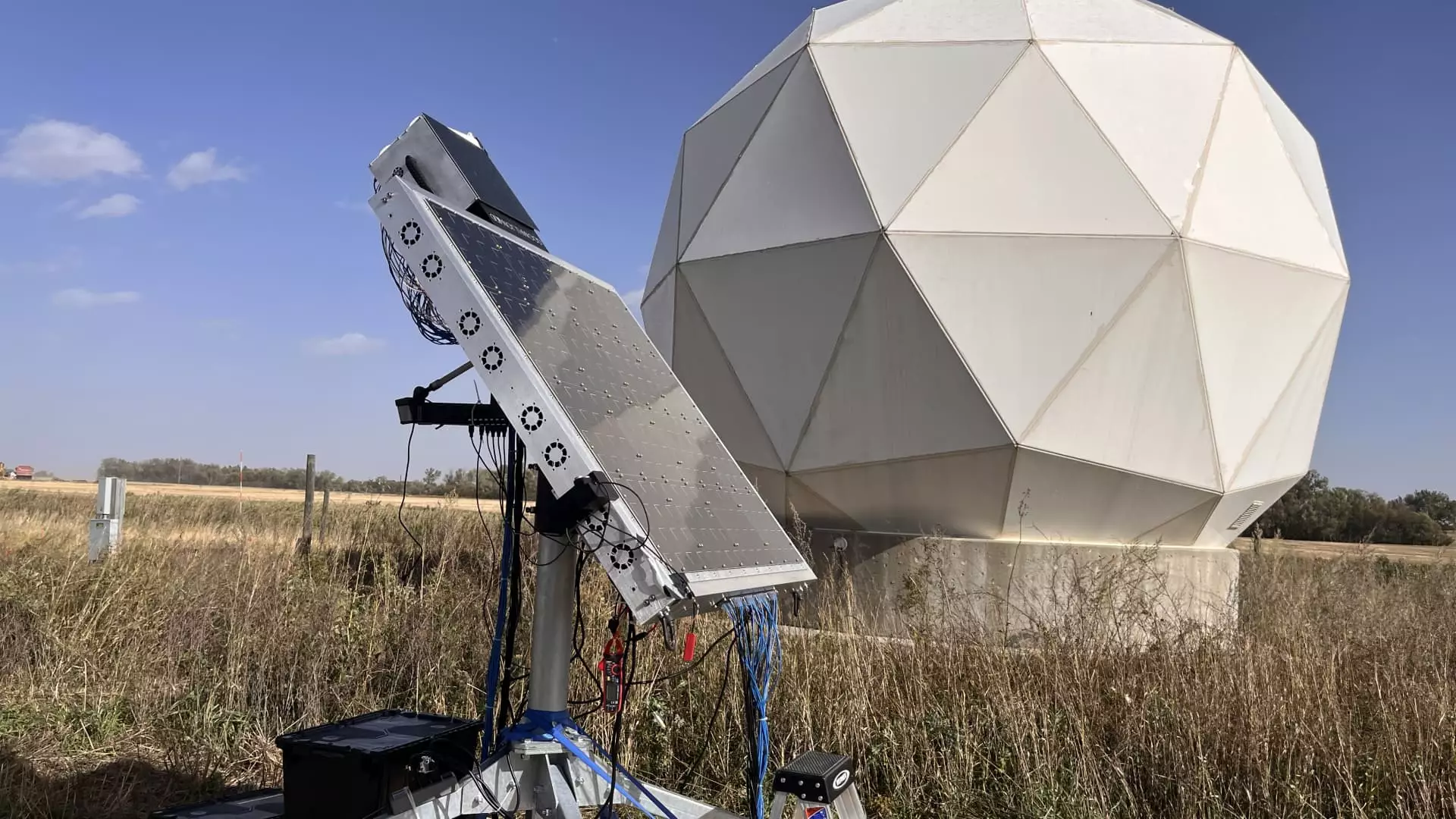In the burgeoning field of space technology, a new player has emerged, promising to redefine ground infrastructure: Northwood Space. This startup, spearheaded by the former Disney star and singer Bridgit Mendler, is making waves following a critical achievement in satellite connectivity. Just last week, Northwood successfully executed its first major development test by establishing a connection with imagery satellites operated by Planet Labs, marking a pivotal moment for the startup and the industry at large.
The Vision Behind Northwood
Northwood Space aims to modernize and expand the ground-based segment of satellite communication, which has traditionally lagged behind advancements in satellite and rocket technology. According to Mendler, the company is leveraging innovative phased array technology to create a network of ground stations capable of efficiently managing satellite communications. Unlike the conventional parabolic dish antennas, which typically connect to one to three satellites at a time, Northwood’s system, known as Portal, is designed for optimized performance, potentially connecting with up to 10 satellites simultaneously.
Mendler’s vision extends beyond mere connectivity; she envisions the establishment of a new industry standard that disrupts the existing paradigm dominated by outdated infrastructure riddled with connectivity issues and high costs. Drawing parallels to the cellular technology domain, she believes that just as cellular firms transitioned to tower-sharing models, Northwood could harness similar efficiencies in ground station operations.
The market landscape for Ground Stations as a Service (GSaaS) is rapidly evolving, with various companies recognizing the lucrative opportunities in bolstering Earth-based components of space infrastructure. Northwood is not the only company eyeing this sector; tech giants like Amazon have already entered the fray with AWS Ground Station services, and satellite communications powerhouse Eutelsat is pursuing substantial investments as it looks to innovate within space connectivity.
Northwood, however, seeks to differentiate itself by addressing the entrenched problems of cost and reliability, which have long plagued satellite communication. Mendler articulates a desire to create a seamless experience that alleviates the “connectivity stuck in a different era,” characterized by blackouts and exorbitant network prices.
Ground Stations: The Unsung Heroes of Space Technology
Though often overlooked, ground stations are critical components of the broader space technology ecosystem. Mendler refers to them as “the third leg of the stool,” complementing rockets and satellites while allowing for the operational efficiency that drives modern space explorations. Recognizing the potential growth stemming from advancements in ground station technology, she asserts that Northwood is well-positioned to foster innovation and accelerate development within the industry.
During a recent prototype antenna test—affectionately named “Frankie”—in the remote region of Maddock, North Dakota, Northwood validated its capabilities by establishing bi-directional communications with Planet’s satellite. Mendler expressed pride in achieving nominal communications that enabled Planet to conduct operations similarly to their own systems, which represents a significant milestone for both Northwood and the ground station sector.
The development of Northwood’s technological solutions has been impressively swift. According to the company, the team designed and built the “Frankie” prototype in just four months, demonstrating efficiency in deployment with live testing initiated merely six hours after unloading the equipment. Such rapid advancements suggest that Northwood can respond to the market demands more agilely than traditional incumbents in the sector.
The company is preparing to roll out its ground stations globally, with ambitions to launch operational sites in regions such as the U.S., Europe, Australia, and New Zealand. Each Portal site will feature antennas of varying sizes—one measuring 5 by 5 feet for S-band frequency and the other 18 by 18 inches for X-band—with data capabilities exceeding 1 gigabit per second per beam, departing from the limitations imposed by previous models.
In closing, Northwood Space stands at the forefront of an impending transformation in satellite communication. With Bridgit Mendler’s leadership and a commitment to addressing the industry’s long-standing issues, the startup is poised to disrupt the sector significantly. By reimagining ground station technology and advocating for a shared, efficient model, Northwood aims not just to advance its brand but to fuel a new era of connectivity in space infrastructure. As Mendler eloquently explains, this breakthrough “unlocks a lot of things about the next chapter,” hinting at an optimistic future for satellite communications and the enterprises that depend on them.

